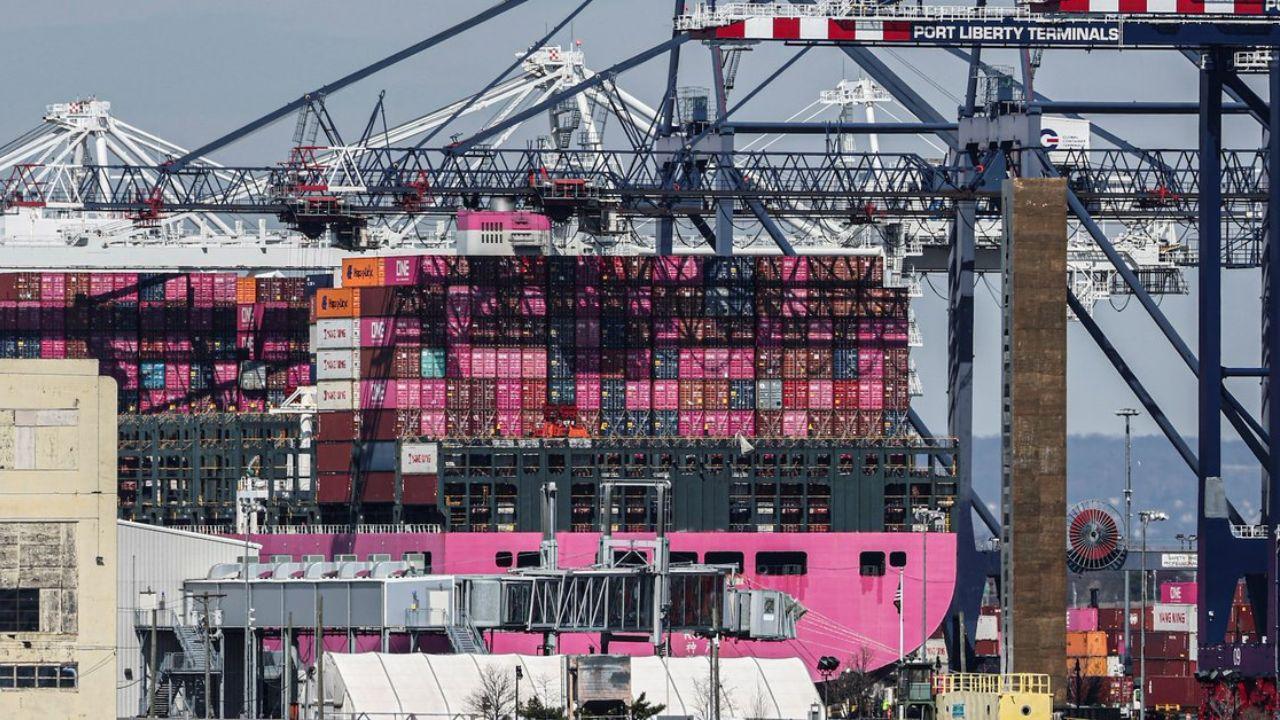
Post by : Avinab Raana
Photo : X / Spotlight on China
A Strategic Shift in Trade and Security
The U.S. is preparing new, sweeping regulations targeting imports of Chinese-made drones and medium to heavy-duty vehicles—an expansion of earlier automotive restrictions. Designed under the banner of national security, these measures aim to limit the infiltration of foreign information and communications technologies embedded in equipment weighing more than 10,000 pounds and advanced unmanned aerial systems. Rolling out as early as this month, the anticipated move marks a calculated intersection of trade policy and defense strategy.
Drones Under the Microscope
China’s commercial drone manufacturers, led by DJI, currently dominate the U.S. market, supplying more than half of all devices. With rising concerns over espionage risks and the potential for embedded surveillance capabilities, policymakers are rethinking access to these systems. The decision to curb drone imports reflects growing unease about how such devices could be leveraged, intentionally or accidentally, against U.S. interests.
Heavy Vehicles Join the Trade Frontline
The new rules also target medium and heavy-duty vehicles—trucks and similar equipment essential to logistics and infrastructure. The concern isn’t just about foreign-made hardware entering the U.S. but about the integrated digital technologies in these vehicles that pose potential vulnerabilities. From onboard computers to cellular-connected systems, these vehicles are becoming conduits for data and access far beyond mere transportation.
Layering on Earlier Automotive Restrictions
This initiative builds on restrictions already applied to Chinese-made passenger cars and light trucks, unveiled under the Biden administration. Those earlier measures focused on limiting sensitive vehicle software and hardware from ‘countries of concern.’ This latest wave extends scrutiny deeper into industrial transport and drone sectors—areas critical to both commerce and national defense.
Section 232 Investigations Fuel Action
Behind the scenes, the Commerce Department had already launched formal national security inquiries under Section 232 into the import of drones and polysilicon in July, followed by heavy vehicle parts in April. Those investigations opened the door to tariffs, quotas, or outright bans. Now, anticipated regulations suggest movement from investigation to immediate action.
A National Security Chess Match
Proponents argue that restricting these imports serves to protect American infrastructure, agriculture, and logistics from adversarial technology infiltration. Critics caution that blanket bans may disrupt industries relying on these imports, including agriculture, construction, and emergency response services. Drone and vehicle connectivity has become deeply embedded in U.S. commerce, and sudden shifts could ripple through supply chains.
Domestic Manufacturers Stand to Gain
National defense and manufacturing advocates see opportunity in this pivot. Reducing reliance on foreign-made systems could accelerate investments in domestic drone and vehicle industries. The push aligns with earlier executive efforts to boost “American-made drone dominance,” signaling a concerted effort to reclaim technological and industrial ground.
Strategic Supply Chains in Focus
Both drones and heavy-duty vehicles have become complex tech systems rather than simple machines. Supply chains span continents, often with critical components sourced globally. The new restrictions will reshape how manufacturers design and distribute products, forcing greater reliance on verified domestic or allied supply chains to meet U.S. standards.
Congressional Momentum and Drone Oversight
These regulation plans reflect broader political consensus around drone vigilance. Lawmakers from both parties have voiced support for limiting or banning Chinese drone imports. Many point to security risks, from spying to infrastructure interference, and call for strengthened domestic capability alongside stricter import oversight.
An Industry in Flux
Businesses and operators feel the tremors of regulatory uncertainty. Agricultural companies, filmmakers, emergency services, and logistics firms that rely on cost-effective Chinese drones now face the prospect of constraints. At the same time, U.S. drone manufacturers—often priced higher—may see renewed demand and investment as alternatives to Chinese imports.
International Trade and Diplomatic Pressures
For China, these curbs may become another flashpoint in ongoing geopolitical pressure with the U.S. Industries and officials in Beijing are likely to view the moves as economic retaliation disguised as security policy—further complicating global trade dynamics and diplomatic engagement.
Executive Action Meets Legislative Backing
This development follows Trump-era executive orders promoting domestic drone manufacturing and Biden-era defense bill provisions limiting federal purchases of Chinese drones. The alignment of executive intent and legislative momentum strengthens the case for swift implementation and enforcement of import restrictions.
Policies Bridging Tech, Trade, and Security
As the new rules gear up, it’s clear that the U.S. is redefining how global tech and trade strategies intersect with national security. Drones and heavy-duty vehicles are no longer benign imports—they are vectors of data, influence, and risk.
How the regulations unfold—and how markets, industry, and legislators respond—will determine whether this becomes a strategic reset that strengthens domestic industrial resilience, or a policy intrusion that disrupts commerce and trade. For now, America’s next move in the trade-security balancing act is unfolding from behind closed doors—but its implications will be felt across boardrooms, factories, and airspace alike.
Chinese drones, Heavy-duty vehicles, National security










Advances in Aerospace Technology and Commercial Aviation Recovery
Insights into breakthrough aerospace technologies and commercial aviation’s recovery amid 2025 chall

Defense Modernization and Strategic Spending Trends
Explore key trends in global defense modernization and strategic military spending shaping 2025 secu

Tens of Thousands Protest in Serbia on Anniversary of Deadly Roof Collapse
Tens of thousands in Novi Sad mark a year since a deadly station roof collapse that killed 16, prote

Canada PM Carney Apologizes to Trump Over Controversial Reagan Anti-Tariff Ad
Canadian PM Mark Carney apologized to President Trump over an Ontario anti-tariff ad quoting Reagan,

The ad that stirred a hornets nest, and made Canadian PM Carney say sorry to Trump
Canadian PM Mark Carney apologizes to US President Trump after a tariff-related ad causes diplomatic

Bengaluru-Mumbai Superfast Train Approved After 30-Year Wait
Railways approves new superfast train connecting Bengaluru and Mumbai, ending a 30-year demand, easi